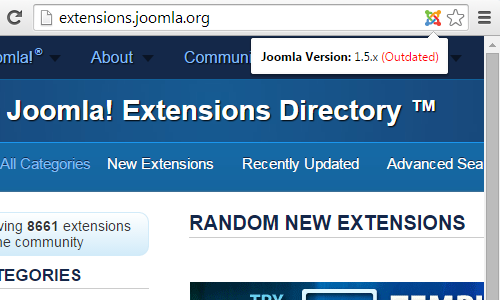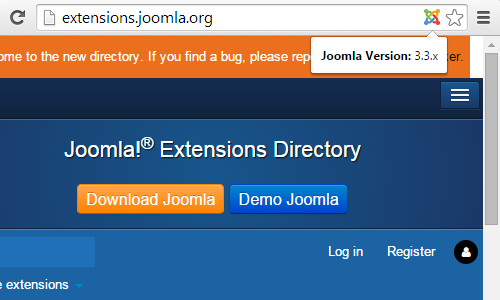Back on October 15, Drupal released Drupal 7.32, which resolved a highly critical security vulnerability that existed in prior Drupal 7 versions. Unlike security vulnerabilities that have been fixed in recent years in Drupal and other major software, this vulnerability was easily exploitable. By the next day we were seeing attempts to exploit the vulnerability and we have been seeing a steady pickup of people contacting us about cleaning up their hacked Drupal websites, which were hit due to this. The speed and scope of the exploitation points to the need to improve how security vulnerabilities are handled in Drupal and more broadly.
Since making software that is completely free of vulnerabilities is next to impossible the best solution for this type of situation is to introduce an improved upgrade mechanism, like the one in WordPress. Starting with WordPress 3.7, security updates are automatically applied without requiring any user intervention. Checks for new versions are normally done every 12 hours and the WordPress server can instruct them to happen more frequently ahead of a planed update, so within a day most websites will have the security update applied. Not only does this protect those websites, but it makes the remaining vulnerable websites a less attractive target since the success rate of trying to exploit the vulnerability is much smaller (that doesn’t mean that they won’t get hacked though).
In the meantime, getting the word out on the need to update or take remedial as soon as possible is important to lessening the severity of security vulnerabilities. In this case Drupal recommend restoring a backup from before October 15 if you didn’t upgrade right away and every day that passes makes it harder to do that. Web hosts could play an important role in getting the word out. At least some of the largest web hosts already have the capability to detect what software and in some cases what version is in use, so they can inform impacted customer of the situation. GoDaddy has attempted to do this for the Drupal 7 vulnerability, though their implementation leaves a lot to be desired.
Today we have had a number of people contacting us saying that they had just been informed of they needed to upgrade Drupal due to a security issue. Considering that the last security update for Drupal 7 was 7.32 and that was released in the middle of October we were wondering what was causing this. It turns out that GoDaddy has just been letting people know of the vulnerability. While rather late, what was more problematic was what they said in the email.
The first big problem is that based on their email you would think that that is just occurred:
A few days ago Drupal announced a “Highly Critical Public Service announcement” that affects all Drupal users. In short, there’s a major security vulnerability that attackers can leverage against your visitors.
The Highly Critical – Public Service announcement was released back on October 29, not a few days ago. Even before that was released it was widely known that there was urgent need to update as the details of the vulnerability were disclosed with the release of the update on October 15.
The email gets more problematic from there. The beginning of the emails indicates that the required action is updating:
Action required:
Update your Drupal website
Later it says:
It’s extremely important that you update your site immediately to ensure you’re not putting your customers at risk.
At this point if you have Drupal 7 website still running a version below 7.32, that hasn’t been otherwise protected against the vulnerability, you should assume that it has been hacked, so just updating isn’t an appropriate resolution. That isn’t mentioned in the email at all, despite the public service announcement they cite being very clear about that.
Drupal Did Not Recommend This
After reading over this we were curious to see if GoDaddy was spreading this bad information on their website as well. It looks like they only got around to mentioning the issue on November 6, but at least in that case they provided accurate information. Another article linked to from that page those highly inaccurate though. Specifically the section Manually Remove Backdoors, which says:
If you do not have a backup of either your website or database (or both), you must manually remove any backdoors from your Drupal installation.
To do this for you, we offer an Expert Service for $79. With this service, we will perform all of the work for you to make our best effort to remove all backdoors using the procedures identified by Drupal. This service does not guarantee your website is free from compromise, but it is as close to compromise-free as anything can come if your Drupal installation wasn’t upgraded before the first reported compromises or restored from a backup created before Oct. 15, 2015 at 11pm UTC.
To purchase the Expert Service, contact customer support.
You can also manually remove any backdoors yourself using the Drupal-recommended procedure outlined here. This procedure is very complicated and requires an advanced understanding of the technologies Drupal uses (PHP, MySQL) to use effectively. Not all steps listed in the procedure are applicable to shared hosting environments, but completing what you can from this list will provide you the greatest likelihood of removing backdoors from your site.
If you follow the link “the procedures identified by Drupal”, you will find that it isn’t actual something from Drupal. Later GoDaddy links to the same page and describes it as the “Drupal-recommended procedure”, but if you actually look at the page it says “The official recommendation is: Restore from pre-October-15-backups.”. You really have to wonder about a company trying to sell you on an “Expert Service”, for which they don’t have the expertise to actually understand a basic, that is they they are citing something that isn’t actually procedures identified by Drupal or recommend by them.













